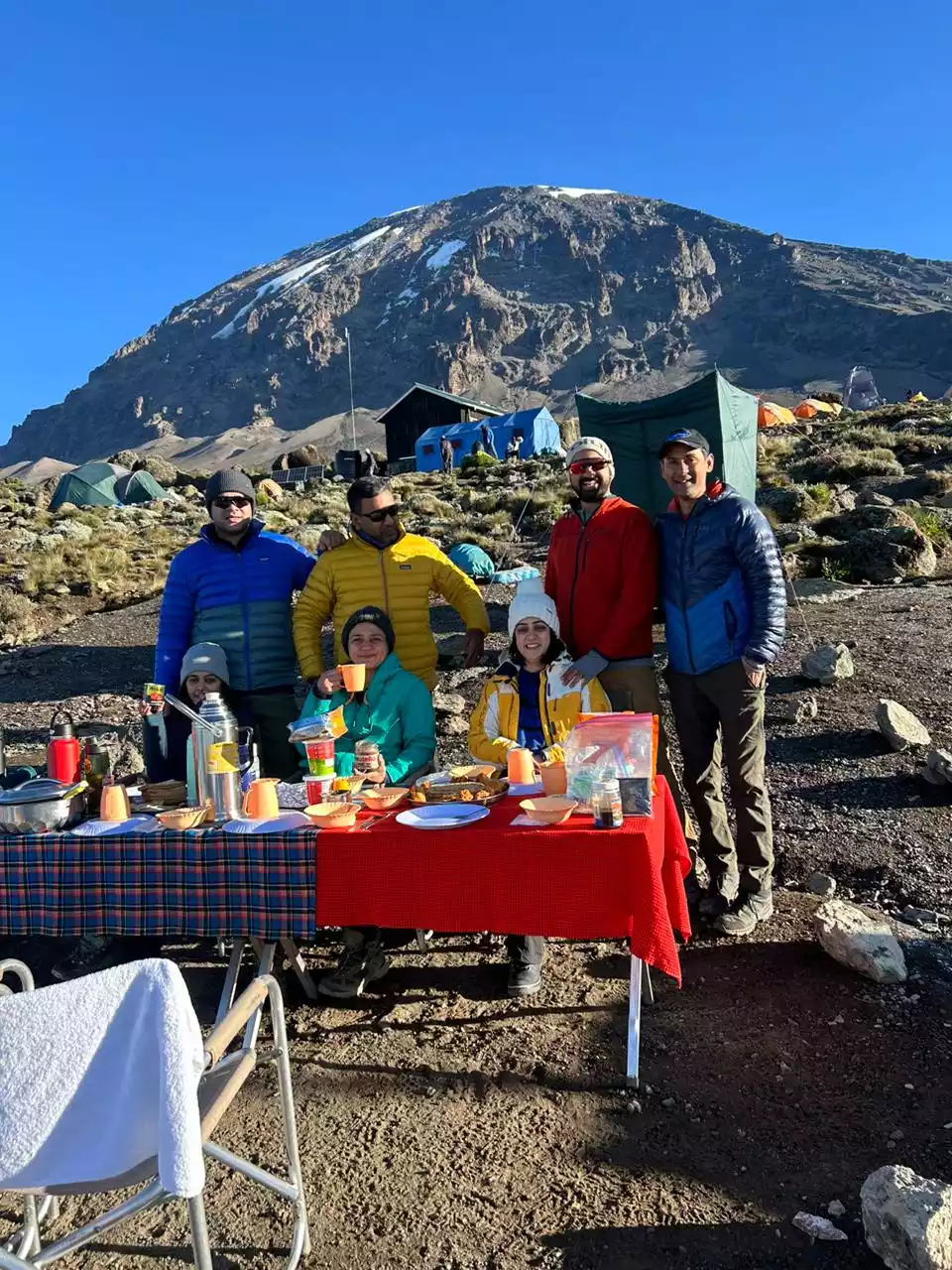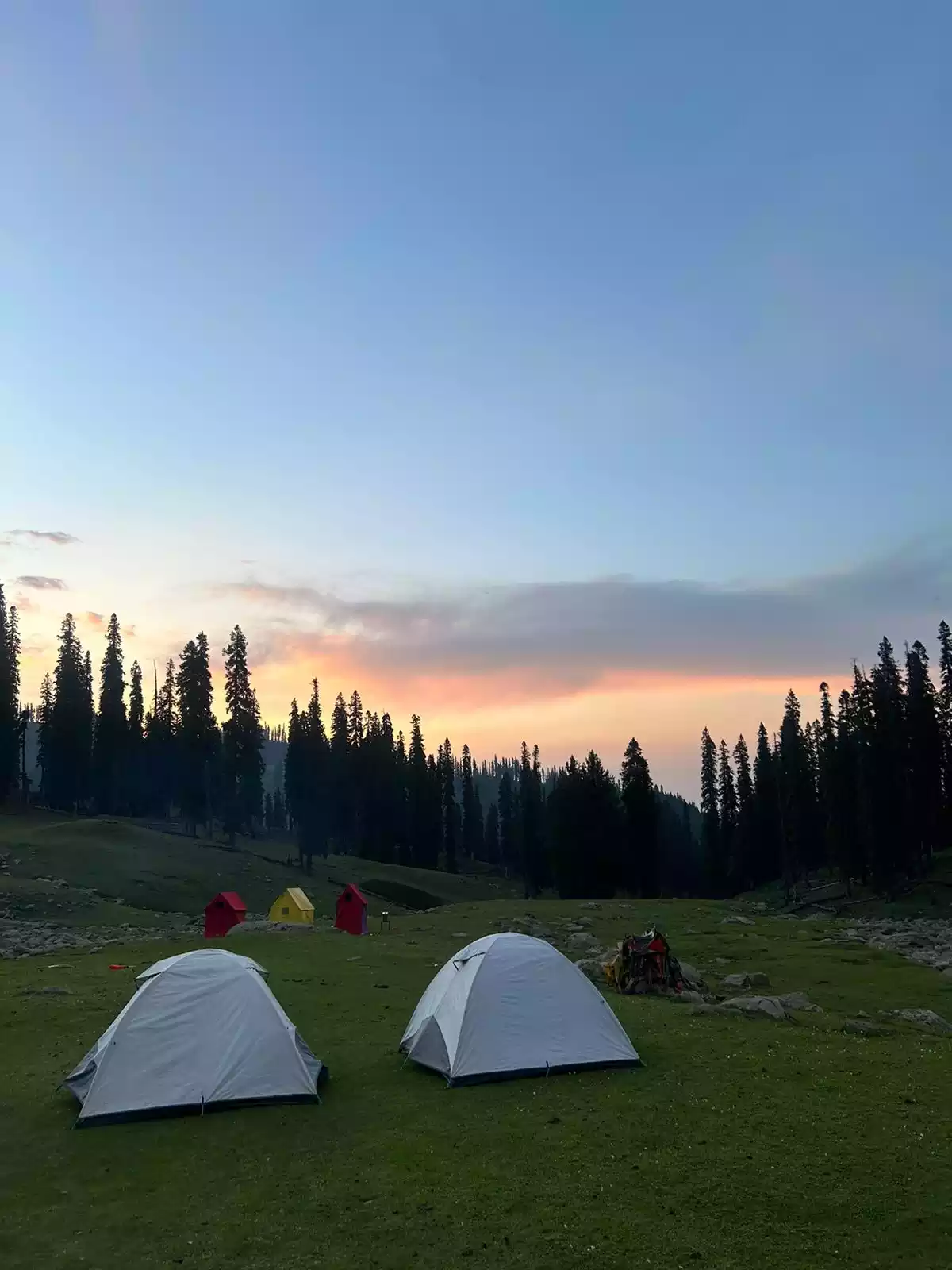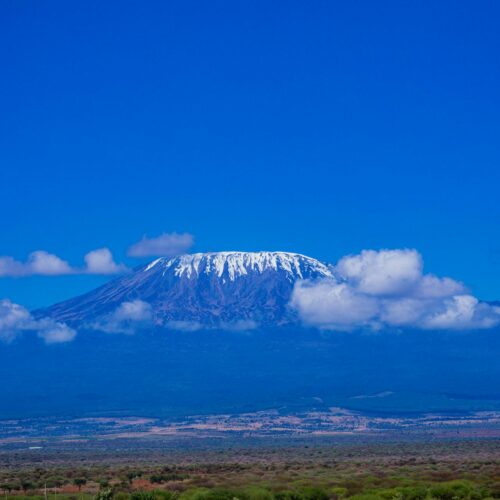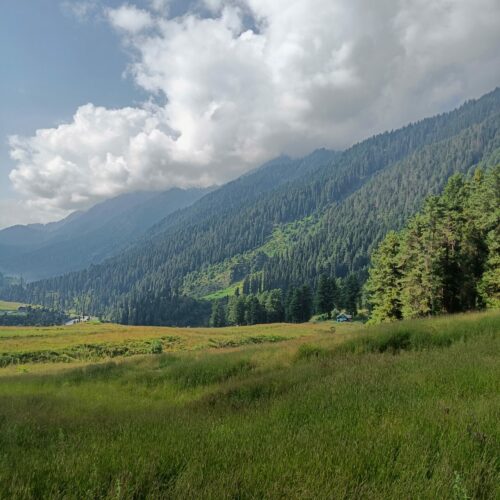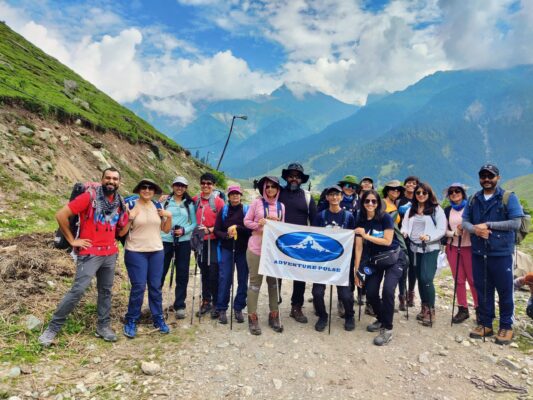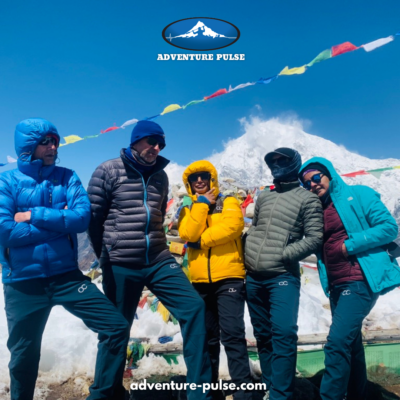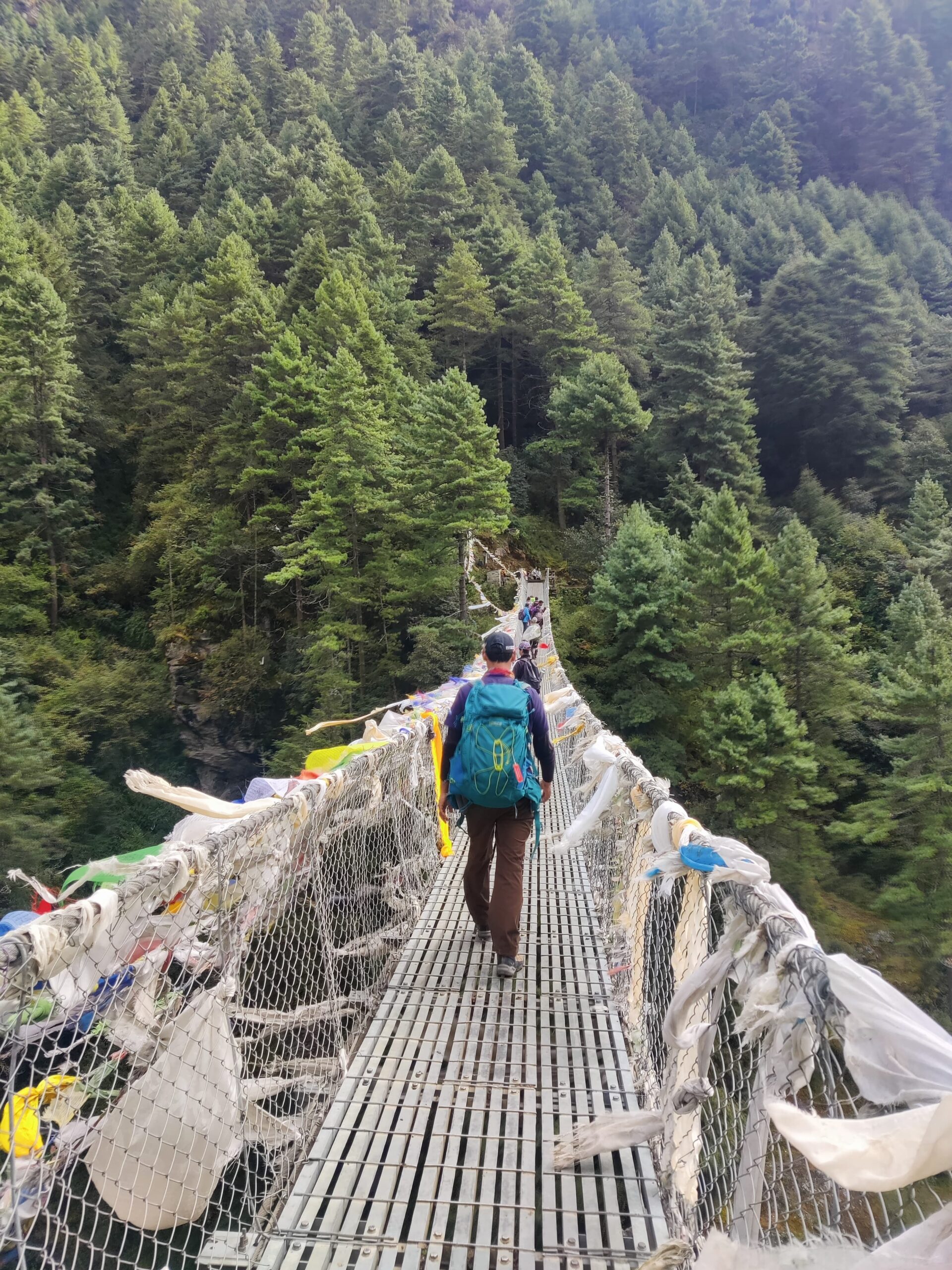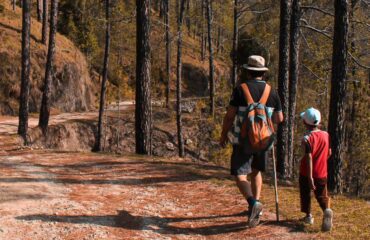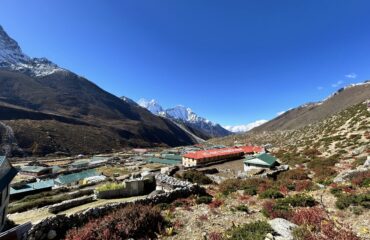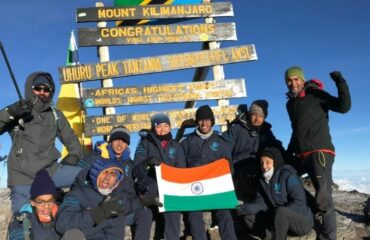
“Ghorepani Poon-hill Trek – The gateway to Himalayan Magic”

Overview
The abode of snow, the Himalayas offer not only majestic views but also some of the best trekking destinations in the world. Nepal, the country nestled in the lap of the Himalayas, serves as the heart of it all. It is truly a paradise, filled with clouds, stunning mountain ranges, panoramic vistas, and rich local culture and heritage.
The home of Mount Everest stands as the country’s main attraction, offering landscapes that range from lush green forests and terraced paddy fields to snow-clad peaks and ancient monasteries. These monasteries carry fascinating stories, adding depth to the experience. Whether you’re a beginner or an experienced trekker, Nepal captures the imagination of all who dream of stepping foot in its land. You’ll be welcomed with open arms, gazing at a starry night sky and listening to the enchanting music of the breeze rustling through the tall mountain grass. Nepal promises exciting adventures and unforgettable memories for everyone.
Introduction : Ghorepani Poon-hill Trek
The Ghorepani Poonhill Trek, located in the Annapurna region, is one of the most popular trekking destinations. It attracts both locals and foreigners alike. Throughout the trek, you’ll be treated to breathtaking views of the Annapurna and Dhaulagiri mountain ranges. After all, what is the world if not the magnificent chase of the sun and moon, set against a canvas painted with flickering stars, far from the light pollution of cities?
Poon Hill lies within the Annapurna Conservation Area Project (ACAP), where the Gurungs and Magar communities, greet you warmly along the way.
The Ghorepani Poonhill trek is beginner-friendly and perfect for anyone looking to experience trekking in Nepal for the first time. The trek offers a variety of stunning landscapes, including lush green forests, cascading waterfalls, and panoramic mountain views, all of which leave a lasting impression on your life and perspective. Additionally, trekkers are treated to a diverse range of flora and fauna, along with rich cultural heritage and charming mountain settlements, featuring cute little mountain houses.
Accommodation along the trek consists of small guesthouses, with plenty of restaurants and teahouses offering food and shelter. The entire route is clearly marked, ensuring you never lose your way. To reach Pokhara, you can easily take a flight taxi, or private cab.
How to reach Ghorepani PoonHill Trek?
Depending on your trek operators, your arrival destination may differ. Some companies offer an all inclusive Kathamndu to Kathmandu service, while others may ask you to come to Pokhara by yourself.
Regardless of both, to reach Ghorepani Poonhill Trek, you first need to get to Pokhara. You can either fly directly from Kathmandu to Pokhara which is 25 minute flight or fly to Kathmandu and then drive. The distance is about 200 km, and the journey will take around 8 to 9 hours by road. The same will be on the way back. The start point and end point of your trek will be in Pokhara itself.
Once you reach Pokhara, the lakeside town, you’ll find buses or taxis to Nayapul, the starting point of the trek. This 40 km stretch can be covered in about 2-3 hours by your chosen mode of transportation. Shared Jeeps, microbuses, private cabs, and local buses are available. You can choose whether to begin your trek clockwise or anticlockwise.
Highlights of the Trek
The trek offers an experience not only of the mountains but also of the entire Himalayas. When the first beam of sunlight falls on the Annapurna and Dhaulagiri ranges, it creates a mesmerizing sight, resembling an orange dreamlike. Some of the key highlights of the trek are:

- Pokhara City, the starting and ending point of the trek, is a place where the Pokhara valley offers a mesmerizing landscape and boating in Phewa Lake. This area is perfect for acclimatization, relaxation, and sightseeing for a day.
- The best sunrise and sunset at Poonhill, complemented by a sip of chai or coffee, hot soupy maggi, and yes, momos with spicy red chutni, which fiercely compete with the cold temperature.
- Along the way, you’ll encounter sparkling waterfalls, suspension bridges, terrace farming in the villages, small hut restaurants, and delicious food.
- The forests of rhododendrons bloom in vibrant colors, especially from March to May. During this period, you can experience the beauty of nature at its finest.
- The panoramic views of the Annapurna ranges include Annapurna I, Annapurna II, Annapurna III, Annapurna IV, and Annapurna South, alongside Dhaulagiri, Dhampus Peak, Nilgiri, Tukuche Peak, Machapuchare, Hunchuli, and Lamjung Himal.
- The famous 3,300 stone stairs of Ulleri village, the stunning views from Deurali Pass and Tadapani Hill, and walks through lush green jungles await you.
- Moreover, you’ll have the chance to witness the lifestyle of the local ethnic groups, such as the Gurung and Magar people, who offer a homely environment and warm hospitality.
- The Gurung museum preserves the history and heritage of the people. You’ll notice that the kitchen plates, bowls, and containers demonstrate the simplicity and practicality of ancient times.
Ghorepani Poonhill Trek Difficulty
The Ghorepani Poon Hill trek is an easy to moderate trek, making it beginner-friendly. This trek is also suitable for families due to its easy accessibility. People with average fitness and various age groups can complete it without difficulty. However, the 3,300-stone staircase to reach Ulleri village is the most challenging section of the trek. Additionally, the last ascent to Ghorepani and Poon Hill might take one or two hours, depending on the individual. Again depending on who your trek operator is, the required fitness level will vary, depending on their logistic and support.
Who is Suitable for the Ghorepani Poonhill Trek?
The Ghorepani Poon Hill trek attracts a variety of hikers. As this is an easy trek, it’s perfect for first-time trekkers. It’s also suitable for beginner hikers, families, solo trekkers, and experienced hikers looking for a short, scenic trek.
Connectivity and Network Channels During the Trek
You’ll find network connections in most sections of the trek.
Electricity is available at the stays, allowing you to charge your phones, cameras, and other devices, however, this facility in the tea houses comes at a cost. WiFi is available for an additional charge too, and mobile networks like Ncell and Nepal Telecom provide good coverage. You can buy a SIM card in larger cities like Kathmandu or Pokhara, along with a data plan. However, note that the cost of charging your devices and using WiFi increases as you gain altitude.
The Best Time to Trek to Ghorepani Poonhill
You can visit Ghorepani Poon Hill year-round. However, trekkers especially favor the autumn and spring seasons. These months offer comfortable weather, neither too hot nor too cold, making them ideal for trekking in dry, warm conditions.
| Season | Months | Temperature | Features |
|---|---|---|---|
| Spring | March to May | 10°C to 24°C | Pleasant warmth, blossoming rhododendrons, and lush vegetation. |
| Summer | May and June | 16°C to 23°C | Hot and humid weather. |
| Monsoon | July to September | 16°C to 23°C | Heavy rainfall, with slippery and muddy trails. |
| Autumn | October to November | 7°C to 20°C | Clear skies and mild weather. |
| Winter | December to February | 2°C to 15°C | Snowfall in higher altitudes. |
Spring (March to May)
Spring brings the blooming of rhododendrons. The red flowers contrast beautifully with the green leaves, creating a large bouquet. The views are photogenic, and the skies are crystal-clear, making for a pleasant walk. Expect to see some snow at the peak, so be prepared with extra clothing and gear.

Summer (May and June)
Summers can be hot and dusty, or the skies may be foggy. These months also signal the onset of the monsoon, with occasional rain showers and slippery paths.
Monsoon (July to September)
Monsoon is the least favorable time to visit. Heavy rains refresh the landscape, but the muddy trails, slippery walks, and the risk of floods pose dangers. Landslides are common, so prepare mentally if you plan to trek during this season. Bring your rain gear, waterproof shoes, raincoats, and ponchos.
Autumn (October and November)
Autumn is one of the best seasons for trekking. The skies are clear, and the environment is dust-free. The post-monsoon period provides lush greenery, and you can experience local festivals like Dashain and Tihar, learning more about the local culture.
Winter (December to February)
Winter brings chilly temperatures and snow. Mornings and nights are cold, but the afternoon sun provides warmth. Snowfall is possible, but be cautious as it makes the ground slippery. Carry all your winter wear, as the cold can catch you off guard.
Accommodation on the trek
Accommodations on the Ghorepani trek are in tea houses that offer a comfortable and pleasant experience. You’ll find lodges, homestays, and teahouses offering well-maintained and clean rooms. Hot water showers are available for an additional charge. The cost varies by location, food items, and time of year, with peak season prices possibly doubling.
These tea houses vary in size and are operated by local families who migrate to higher altitudes during trekking season. Rooms typically feature twin beds with mattresses, pillows, and blankets, and access to common bathrooms.
The tea houses also have fully functional kitchens that prepare fresh meals. The dining areas are equipped with tables, chairs, and a central Bukhari to keep you warm and cozy. The hospitality of the Nepali people enhances the entire trekking experience, making it unforgettable.
Food
The food options are consistent and simple along the trail. You’ll find Dal-Bhat-Tarkari, the traditional Nepali meal. For foreigners, you’ll also find Italian, Tibetan, Indian, and Continental food. Small restaurants and teahouses run by locals offer these meals. Along the way, you can enjoy chai, coffee, maggi, pasta, pancakes, eggs, and sandwiches. Cold drinks and local alcohol are available, though they may be expensive. Plastic water bottles are banned in Nepal. You can drink from the tap water, or use purification tablets or a water filtration system. Filtered and boiled water is available starting from NPR 100/- and it increases as you go deeper into the valley.
Other Facilities
Small shops and stalls along the trail sell snacks, toiletries, and rental trekking gear. Medical rooms with basic facilities are available, but no clinics or hospitals exist along the route. Stays also offer comfort and relaxation spaces where you can enjoy the sun and views while watching the locals in their daily routines.
What is the Trail Like?
The trail is a mixture of fascinating terrain and landscapes. The path consists of iconic stone steps, typical of trekking in Nepal. You’ll pass through forests, rocky sections, and various ascents and descents, making the trek adventurous. The climb up to Ulleri features a series of stone steps, and other sections provide scenic flat paths. The villages, with their traditional houses and local architecture, offer a glimpse of local culture and history.
The trail is straightforward and well-marked, making it accessible to trekkers of all levels. The gradual altitude gain reduces the chance of altitude sickness, making the trek enjoyable for first-time Himalayan trekkers.
Conclusion
The Ghorepani Poon Hill trek is short, beginner-friendly, and family-oriented. Located in the Annapurna circuit of Nepal, it offers spectacular views of the Annapurna and Dhaulagiri ranges. The trek can be completed in under a week, allowing you to explore Nepal’s rich cultural and historical heritage.
The trek is particularly rewarding during spring when the rhododendrons bloom. If you’re an adventure enthusiast, this trek should be on your checklist to explore the beauty of Nepal.
Blog Credits – Nabamita Choudhury

